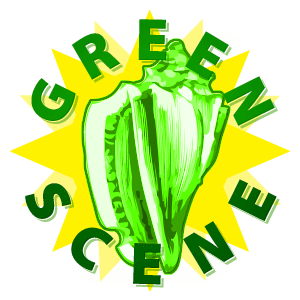KEY WEST NATIONAL WILDLIFE REFUGE TO CELEBRATE 100 YEARS OF CONSERVATION
KEY WEST, Florida Keys — In 1908, in response to a fashion trend that was decimating migratory bird populations, then-President Theodore Roosevelt created the Key West National Wildlife Refuge to protect and preserve a breeding ground for migratory species.
Saturday, Nov. 15, the refuge’s 100 years of conservation are to be commemorated by dignitaries, speakers, refuge staff and volunteers, environmental organizations and “Teddy Roosevelt” himself, portrayed by a re-enactor.
The anniversary celebration, slated for 10 a.m. to 4 p.m., is open to the public at the Florida Keys Eco-Discovery Center, located on Key West’s Truman Waterfront beyond the end of Southard Street. Highlights are to include an environmental fair and a presentation by Key West Mayor Morgan McPherson proclaiming Key West National Wildlife Refuge Day.
Roosevelt signed a law establishing the refuge in response to the hunting of huge numbers of birds for their colorful feathers, which were used to decorate fashionable women’s hats. “The plume trading industry was so lucrative that in 1903 an ounce of bird feathers was worth $32 — twice the price of gold,” said Anne Morkill, event organizer and manager of the Florida Keys National Wildlife Refuges Complex, which includes the Key West unit. “Adult birds were hunted, resulting in abandoned nests and destroyed eggs of snowy egrets, herons, pelicans and many others.”
Today, the Key West National Wildlife Refuge provides nesting, roosting and foraging habitat for more than 250 species of migratory birds such as the roseate tern, osprey, bald eagle and magnificent frigate bird. It also protects critical nesting habitat for endangered marine turtles and host plants for the rare Miami Blue butterfly.
Lying west of Key West and accessible only by boat, the refuge is shaped like a large rectangle with boundaries stretching 10 miles wide and 25 miles long. It includes 2,019 acres of land and 206,289 acres of state waters co-managed with the State of Florida and the Florida Keys National Marine Sanctuary.
Many of the refuge’s secluded beaches are open to the public during daylight hours for wildlife–oriented recreation, while nearby waters are prime sites for responsible fishing and boating. Other areas of the refuge are closed to public access for environmental reasons.
The anniversary celebration is to include an environmental fair with more than a dozen information booths, the dedication of a plaque commemorating the refuge’s centennial anniversary, lectures and presentations on the Keys’ natural environment and topics related to the refuge, children’s activities such as fish printing, giveaways and a chance to mingle with “Teddy.”
In addition, the Key West Post Office is to offer a special one-time postal cancellation in honor of the anniversary.
The 6,400-square-foot Florida Keys Eco-Discovery Center, the site of the celebration, is the visitor center for the Florida Keys National Marine Sanctuary.
For more information about the anniversary, call the Eco-Discovery Center at (305) 809-4750 or the National Key Deer Refuge Visitor Center at (305) 872-0774.
For information about lodging in Key West, call 1-800-LAST-KEY (800-527-8539) or explore this Web site.
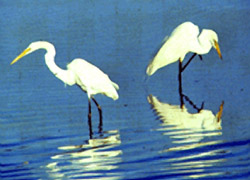
Along with the Great White Heron Refuge, KWNWR represents the last of the offshore islands in the lower Florida Keys available as critical nesting, roosting, wading and loafing habitat to over 250 avian species — particularly wading birds. (Photo courtesy of Key West National Wildlife Refuge)
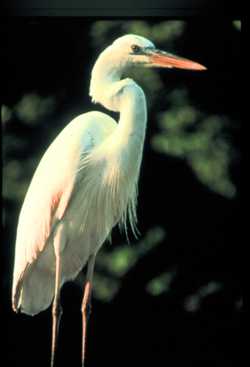
White herons are North America’s largest wading bird and, according to the U.S. Fish and Wildlife Service, are found only in the Florida Keys and on the South Florida mainland.
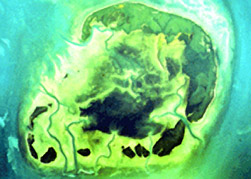
An aerial view of the Refuge illustrates its habitat as mostly mangrove islands, with a few sandy beaches and dunes that are critical nesting habitat for endangered sea turtles, as well as saltmarsh, sea grass and coral reef communities. (Photo courtesy of Key West National Wildlife Refuge)
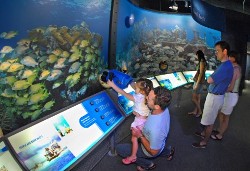
Andy Olday, left, hoists his daughter Emilia, so she can view a video screen on an underwater camera at the Florida Keys Eco-Discovery Center in Key West, Fla. Through a series of interactive exhibits, the $6 million Eco-Discovery Center showcases the Florida Keys National Marine Sanctuary's environment. Photo by Andy Newman/Florida Keys News Bureau
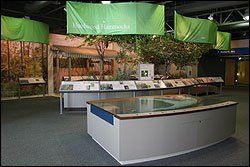
The 6,400-square-foot Florida Keys Eco-Discovery Center, the site of the celebration, is the visitor center for the Florida Keys National Marine Sanctuary, showcasing interactive exhibits and displays. (Photo courtesy of National Marine Sanctuaries)

